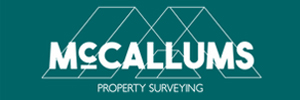Are you looking for chartered surveyors in Islington? Get in touch with local chartered surveyors today.
Written by Compare My Move Reviewed by Dave Sayce
1st Jun 2025
We connect you with up to 6 trusted and local surveying partners in Islington, helping you make confident, informed decisions about your property.
Our experienced partners carry out a range of residential property surveys, including RICS Level 2 (Homebuyer) and Level 3 (Building) surveys. Each report provides detailed insights into the condition of the property, helping to identify defects, risks or repair needs that could affect your decision, or your budget.
From initial advice to the final report, our surveyors aim to give you clarity, peace of mind, and the confidence to move forward.
All surveyors we work with are fully qualified and regulated by the Royal Institution of Chartered Surveyors (RICS) or the Residential Property Surveyors Association (RPSA), ensuring your survey is carried out to the highest professional standards.
By comparing quotes, you'll find expert local surveyors at a fair price, without compromising on quality. With Compare My Move, you could save up to 70% on your survey costs. Simply fill out our quick online form to receive free quotes from up to six trusted surveyors working in Islington.
10 best chartered surveyors
Here are the 10 best chartered surveyors in Islington for 2025:
1. e.surv Chartered Surveyors
e.surv Chartered Surveyors is among the best surveyors on our network. Providing Home Surveys and Valuation Reports, they can accommodate most surveying requirements. Their team are regulated by RICS, meaning that they carry out all inspections and reports to the highest standards. They aim to build trusted and valued relationships with their customers. This is reflected in the 5-star reviews they have received since joining our partner network in January 2018.

No reviews yet
Save on Your Property Survey
Speak to a RICS Surveyor Today
2. Precision Surveyors Ltd
C&C Surveying is an excellent surveyor offering a wide range of surveying options. This inclues RICS Home Survey Levels 2 and 3, Valuation Reports, and Snagging Surveys. They can advise you on the best option for your transaction. Their team goes the extra mile to deliver exceptional service. They will carry out thorough inspections and will write up a jargon-free report. They have accumulated over 50 5-star reviews since joining our network in August 2019.

No reviews yet
Save on Your Property Survey
Speak to a RICS Surveyor Today
3. Dunford Penrose Surveyors Ltd
An excellent surveying firm to consider is Dunford Penrose Surveyors. Specialising in Home Survey Levels 2 and 3, they can accommodate most property types. All their surveyors are regulated by RICS and adhere to their guidelines when carrying out inspections and writing up the report. They have been a member of our partner network since November 2021 and have amassed over 55 5-star reviews.

No reviews yet
Save on Your Property Survey
Speak to a RICS Surveyor Today
4. McCallums Surveyors
A fantastic surveyor to consider is McCallums Property Surveying. Their team offers a wide range of services including Home Surveys, Valuation Reports, and Snagging Surveys. This means they can accommodate most surveying requirements. Having received over 50 5-star reviews since joining our partner network in November 2020, they can be trusted to provide excellent service.

No reviews yet
Save on Your Property Survey
Speak to a RICS Surveyor Today
5. Reliable Property Group
Another top-rated surveyors on our network is Reliable Property Group. Their team have a wealth of knowledge and will be on hand to give you confidence in your property purchase. They offer RICS Home Survey Levels 2 and 3, delivering excellent service. They have been a Compare My Move partner since January 2019 and have over 40 5-star reviews.

No reviews yet
Save on Your Property Survey
Speak to a RICS Surveyor Today
6. Sterlingworth Surveyors Ltd
Sterlingworth Surveyors is one of the top surveying firms on our partner network. They offer a wide range of services including Home Surveys and Valuation Reports. This means they can accommodate all property types and will endeavour to give you confidence in your property transaction. They first became a partner in October 2020 and have amassed over 25 5-star reviews.

No reviews yet
Save on Your Property Survey
Speak to a RICS Surveyor Today
7. Ark Surveyors Limited
A top-rated surveyor on our network, Ark Surveyors Ltd is a team of independent RICS London surveyors. They have expertise in RICS Home Survey Level 2, RICS Home Survey Level 3 and valuations. They take pride in guiding customers through the surveying process, remaining honest and focused. These surveyors can help you make an informed decision on the property you are looking to purchase. Rest assured, all of their experienced surveyors are a member of RICS and offer a flexible and friendly service to suit your needs.

No reviews yet
Save on Your Property Survey
Speak to a RICS Surveyor Today
8. London & Kent Surveyors
London & Kent Surveyors are a great option to consider. They provide RICS Level 2 and 3 Home Surveys. In addition to this, they also offer Party Wall assistance. The team is RICS-regulated and expertly trained to provide you with the best possible service. They will discuss the details of the survey in detail so you are aware of any recommendations or issues that need to be addressed.

No reviews yet
Save on Your Property Survey
Speak to a RICS Surveyor Today
9. HouzeCheck Limited
HouzeCheck is one of the best surveyors on our network to consider. Their team provides services for Home Survey Levels 2 and 3 as well as Valuation Reports. This means they can accommodate most property types. Their surveyors are regulated by RICS, meaning they can be trusted to carry out all jobs to the highest standard. They first joined our partner network in April 2022 and have accumulated many 5-star reviews.

No reviews yet
Save on Your Property Survey
Speak to a RICS Surveyor Today
10. Able Surveyors Limited
Able Surveyors Limited are a top-rated surveying company to consider. They are RICS approved and can provide assistance with RICS Level 2 and 3 Homne Surveys. The team can also provide Valuation Reports if needed. They explain everything in detail and are on hand to answer any questions or queries you have about the property you want to purchase. They have amassed many 5-star reviews since joining our partner network in July 2018.

No reviews yet
Save on Your Property Survey
Speak to a RICS Surveyor Today
How we selected these surveying companies

Companies are chosen based on their number of reviews. The highest number of reviews are prioritised. Average ratings are used for companies with the same number of reviews.

All partners must pass our strict verification process. We ensure companies are legitimate by carrying out verification and ID checks.

Partners must abide by our 9-point Code of Practice. This includes contacting customers within 48 hours of receiving a lead.

All reviews must be written by genuine customers who have used our services. Reviews are based on the survey and report, customer service and value for money.

Surveying partners offering valuations, Level 2 and Level 3 surveys must be regulated by RICS. Surveyors offering snagging surveys can also be RPSA-regulated.

Partners must have an up-to-date website or RICS profile that contains their contact details and location.
Frequently asked questions
How much does a survey cost in Islington?
Which survey do I need?
Opt for a Level 3 Survey if the property is older, listed, has been altered, or needs renovation. If you're unsure, a surveyor can help assess your needs and recommend the most suitable option.
What does a surveyor do?
How long does a survey take?
How to find a surveyor
Compare My Move can help assist you with choosing a surveyor in Islington that is trusted and verified. You simply need to fill out our online form. We can then connect you with up to 6 different local surveyors, helping you to save up to 70% on your surveyor costs.
Alternatively, you can ask family and friends for suggestions. Before deciding on a surveyor, it's useful to have several quotes to compare and contrast. This will give you a better idea of the services provided and overall costs.

